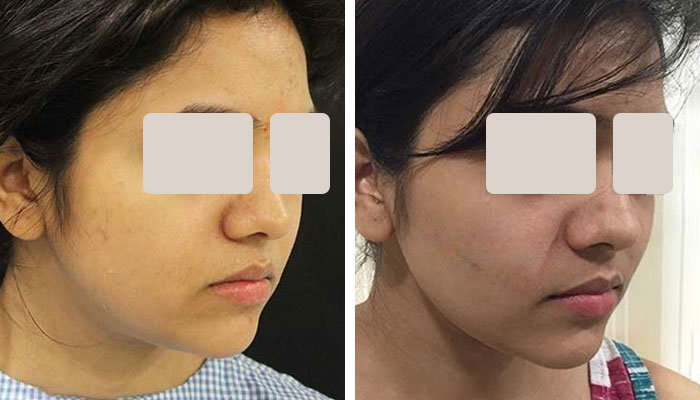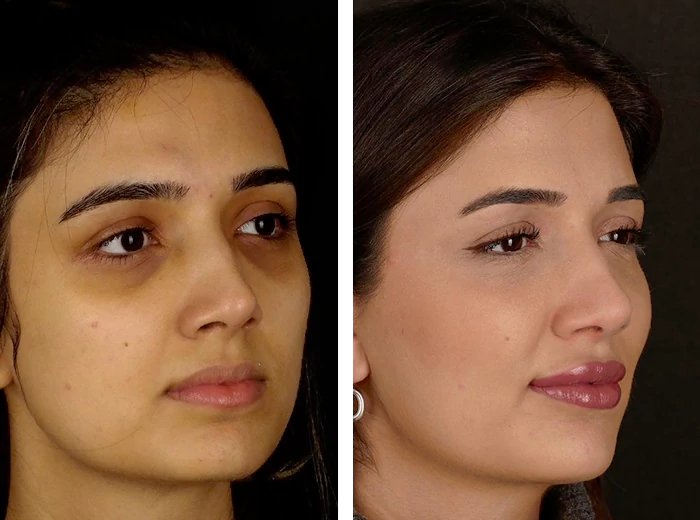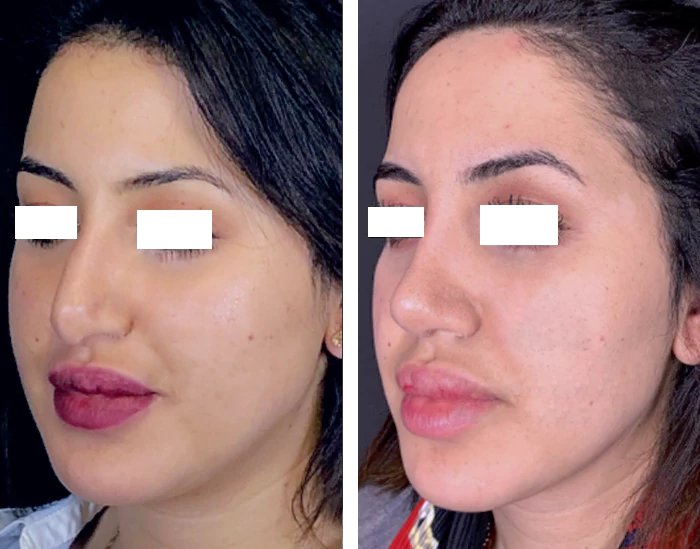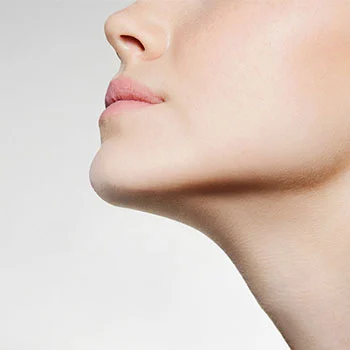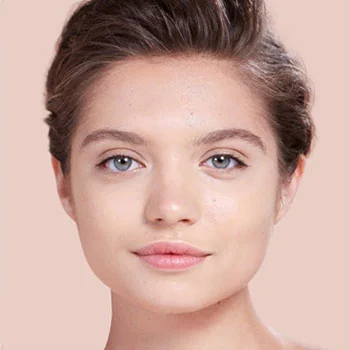What is buccal fat
The buccal fat pad, also called Bichat’s fat pad, is a distinct structure composed of adipose (fat) tissue encapsulated by connective tissue. It is present in varying sizes among individuals and can contribute to the overall shape and contour of the face. It is more prominent in some people, giving them a fuller or rounded appearance in the cheek area.
The size and prominence of the buccal fat pad can be influenced by factors such as genetics, age, and body weight. In some cases, individuals may feel that their buccal fat pads are excessively large, leading to a rounder or "chubby" facial appearance that they may wish to address.
What is buccal fat removal?
Buccal fat removal, also called by other names such as buccal fat reduction, bichectomy, or buccal lipectomy, is a surgical procedure that involves the removal of a portion of the buccal fat pads located in the lower part of the cheeks. The buccal fat pads are distinct fat deposits that contribute to the fullness and roundness of the cheeks.
The procedure is typically performed on individuals who desire a slimmer or more contoured appearance in the lower cheek area. By selectively removing a portion of the buccal fat pads, the procedure aims to create a more defined cheekbone structure and a more sculpted facial contour.
Why is buccal fat removed?
Buccal fat removal is typically performed for cosmetic purposes in individuals who desire a more contoured or slender appearance of the face. The main goal of buccal fat removal is to reduce the volume and fullness of the cheeks by selectively removing a portion of the buccal fat pads.
Here are some common reasons why individuals may choose to undergo buccal fat removal:
- Facial slimming: Some individuals have naturally fuller or rounder cheeks due to the size or prominence of their buccal fat pads. Buccal fat removal can help create a slimmer, more sculpted facial profile by reducing the volume of the cheeks.
- Definition of facial features: By reducing the fullness of the cheeks, buccal fat removal can enhance the definition of other facial features, such as the cheekbones and jawline. This can result in a more angular or chiseled appearance.
- Correction of "chipmunk cheeks": Some people may feel self-conscious about having excessively round or chubby cheeks, often referred to as "chipmunk cheeks." Buccal fat removal can address this concern by reducing the buccal fat pads and creating a more balanced facial contour.
- Personal aesthetic preference: Buccal fat removal is a personal choice made by individuals who desire a specific facial appearance. It allows them to achieve their desired aesthetic goals and improve their self-confidence.
Am I a good candidate for buccal fat removal?
Determining whether you are a good candidate for buccal fat removal requires a comprehensive evaluation by a qualified surgeon who specializes in facial aesthetics. Here are some factors that may indicate you are a potential candidate for buccal fat removal:
- Excess buccal fat: Buccal fat removal is intended for individuals with excess fat in the buccal fat pads, which are located in the cheeks. If you have a round or chubby face due to prominent buccal fat pads, buccal fat removal may help achieve a more sculpted and defined facial appearance.
- Facial contouring goals: Buccal fat removal is often sought by individuals who desire a more defined or contoured facial appearance. If you wish to enhance your cheekbones, create a more angular or V-shaped face, or reduce facial fullness, buccal fat removal may be an option.
- Good overall health: Candidates for any surgical procedure, including buccal fat removal, should be in good overall health. This includes being free from any significant medical conditions that could increase the risks associated with surgery.
- Realistic expectations: It is important to have realistic expectations about the outcomes of buccal fat removal. Consult with a surgeon to discuss your goals and ensure they align with what can be realistically achieved through the procedure.
- Facial anatomy: Your facial anatomy and bone structure play a role in determining the suitability for buccal fat removal. The surgeon will evaluate your facial proportions and discuss how the procedure can potentially enhance your natural features.
Conversely, factors that may make someone not suitable for the procedure include:
- Insufficient buccal fat: If you have naturally thin or hollow cheeks, buccal fat removal may not be appropriate or may not produce the desired results.
- Medical conditions and health status: Certain medical conditions or health concerns may make someone not suitable for buccal fat removal.
- Unrealistic expectations: If an individual has unrealistic expectations about the outcomes of buccal fat removal, they may not be suitable for the procedure.
- Age considerations: Buccal fat removal is typically performed on individuals who have completed facial development.
- Facial asymmetry: If an individual has significant facial asymmetry, buccal fat removal may not be the appropriate procedure.
It is important to note that buccal fat removal is a personal choice, and the decision to undergo the procedure should be based on a thorough consultation with a qualified surgeon. They will assess your individual circumstances, discuss the potential benefits and risks, and provide personalized recommendations based on your specific needs and goals.
How is buccal fat removed?
Buccal lipectomy is usually performed on an outpatient basis, meaning you can go home on the same day as the procedure. It is performed under local anesthesia or sometimes with the addition of sedation, depending on the surgeon's preference and the patient's comfort. In general, the procedure typically takes around 30 minutes to 1 hour to complete. Here is an overview of the typical steps involved in the buccal fat removal procedure:
- Consultation: The process begins with a consultation with a qualified surgeon who specializes in facial aesthetics. During this consultation, your goals, expectations, and facial anatomy will be assessed and the surgeon will talk to you to prepare you for the procedure.
- Anesthesia: Before the procedure, local anesthesia or general anesthesia is administered to ensure your comfort throughout the surgery. The choice of anesthesia depends on factors such as the extent of the procedure and your personal preference.
- Incisions: The incisions for buccal fat removal are typically made inside the mouth, in the natural crease between the gums and cheeks. This approach eliminates visible external scars. Sometimes, a small incision may also be made on the outer cheek, near the earlobe, to facilitate access and removal of the buccal fat pad.
- Removal of buccal fat: Once the incisions are made, the surgeon carefully locates and accesses the buccal fat pads. A portion of the fat pad is then selectively excised or removed. The amount of fat removed depends on your desired outcome and the surgeon’s assessment of your facial anatomy.
- Closure: After the desired amount of fat is removed, the incisions are closed using dissolvable sutures. The incisions inside the mouth usually heal relatively quickly.
- Recovery and aftercare: Following the procedure, you will be provided with specific post-operative instructions. This may include recommendations for pain management, dietary restrictions, oral hygiene practices, and the use of cold compresses to reduce swelling. Swelling and bruising are common after buccal fat removal and typically subside within a week or two.
It is important to note that buccal fat removal is a surgical procedure that carries potential risks and complications. These can include infection, bleeding, nerve injury, asymmetry, and dissatisfaction with the aesthetic outcome. It is crucial to choose a qualified and experienced surgeon to perform the procedure and to discuss all potential risks and benefits during your consultation.
How to prepare for buccal fat removal?
To prepare for buccal fat reduction surgery, here are some general guidelines:
- Consultation: Schedule an initial consultation with a qualified surgeon who specializes in facial aesthetics. During the consultation, discuss your goals, expectations, and any concerns you may have. The surgeon will evaluate your facial anatomy and overall health, and determine if you are a suitable candidate for the procedure.
- Medical evaluation: Your surgeon may request a medical evaluation to ensure you are in good health and can undergo surgery safely. This may involve blood tests, medical history reviews, and any necessary medical clearances.
- Communication: Clearly communicate your desired outcome and expectations to your surgeon. They will provide you with information on what can be realistically achieved through buccal fat removal.
- Medications and supplements: Inform your surgeon about any medications, supplements, or herbal remedies you are currently taking. They will provide guidance on which ones to continue or discontinue before the surgery.
- Smoking and alcohol: If you smoke or consume alcohol, you may be advised to refrain from these activities for a certain period before and after the procedure, as they can interfere with healing and increase the risk of complications.
- Fasting: Follow any specific fasting instructions provided by your surgeon. Typically, you will need to avoid eating or drinking anything for a certain period before the surgery, as directed.
- Arrange transportation: Since buccal fat removal is typically performed under anesthesia, make sure to arrange transportation to and from the surgical facility on the day of the procedure.
- Post-operative care: Familiarize yourself with the post-operative care instructions provided by your surgeon. This may include information on pain management, dietary restrictions, oral hygiene practices, and the use of cold compresses to reduce swelling.
It is important to follow the specific instructions given to you by your surgeon, as individual circumstances and requirements may vary. By preparing adequately, you can help ensure a smooth and successful buccal fat removal procedure.
What is buccal fat removal recovery and aftercare like?
The recovery and aftercare process following buccal fat removal typically involves the following:
- Swelling and bruising: Swelling and bruising in the treated area are common after bichectomy. These effects can vary in intensity and duration depending on the individual. Cold compresses and prescribed pain medications can help manage discomfort and reduce swelling.
- Oral care: Good oral hygiene is crucial during the recovery period. You may be advised to rinse your mouth with an antiseptic mouthwash or saltwater solution after meals to keep the surgical site clean and minimize the risk of infection. Avoid vigorous rinsing or spitting to prevent dislodging the blood clot or stitches.
- Diet: Your surgeon may recommend a soft or liquid diet for a few days following the procedure. This is to avoid chewing on the surgical site and allow for proper healing. Gradually reintroduce solid foods as advised by your surgeon.
- Medications: It is important to take any prescribed medications as directed. This may include pain medications, antibiotics to prevent infection, and anti-inflammatory drugs to reduce swelling.
- Rest and recovery: Allow yourself ample time to rest and recover following the procedure. Avoid strenuous activities, heavy lifting, or any activities that may put pressure on the treated area for a few days or as advised by your surgeon.
- Follow-up appointments: Schedule and attend any recommended follow-up appointments with your surgeon to monitor your healing progress. They will assess the surgical site, remove any non-dissolvable stitches if necessary, and address any concerns or questions you may have.
- Healing timeline: The recovery timeline can vary from person to person. Swelling and bruising generally subside within a week or two, but it may take several weeks or months for the final results to be fully visible.
It is important to follow all post-operative instructions provided by your surgeon to ensure optimal healing and minimize the risk of complications. If you experience severe pain, excessive swelling, bleeding, or any signs of infection, contact your surgeon immediately.
Remember that individual experiences may differ, so it is crucial to consult your surgeon for personalized aftercare instructions and guidance based on your specific circumstances.
What are the potential risks and side effects?
Like any surgical procedure, buccal lipectomy carries potential risks and side effects. It is important to be aware of these possibilities before undergoing the procedure. Here are some common risks and side effects associated with buccal fat removal:
- Swelling and bruising: Swelling and bruising are common after buccal fat removal and typically resolve within a few weeks. However, in some cases, swelling may persist for a longer period.
- Infection: Although uncommon, there is a risk of developing an infection at the surgical site. This can usually be managed with antibiotics, but in rare cases, additional treatment or drainage may be required.
- Nerve damage: The nerves that supply sensation to the cheeks and surrounding areas can be affected during the procedure, resulting in temporary or, rarely, permanent numbness or altered sensation. Most cases of nerve damage are temporary and resolve within a few weeks or months.
- Asymmetry: There is a possibility of uneven or asymmetrical results, where one cheek appears different from the other. This can occur due to differences in facial anatomy or surgical technique.
- Scarring: Incisions made inside the mouth usually heal well and are not visible externally. However, in some cases, scarring may occur, leading to visible or noticeable scars.
- Unsatisfactory aesthetic outcome: It is important to have realistic expectations about the results of buccal fat removal. While the procedure aims to achieve a more contoured facial appearance, individual anatomy and healing can impact the final outcome. It is possible to be dissatisfied with the aesthetic results.
- Pain and discomfort: Some degree of pain or discomfort is expected during the recovery period. This can be managed with prescribed pain medications and usually subsides over time.
- Other general surgical risks: As with any surgical procedure, there are general risks associated with anesthesia, bleeding, blood clots, and allergic reactions to medications.
It is crucial to have a thorough consultation with a qualified surgeon, who will assess your individual circumstances, discuss the potential risks and side effects, and provide personalized advice. By choosing a skilled and experienced surgeon and following their instructions, you can minimize the risk of complications and enhance the likelihood of a successful outcome.
How much does it cost?
The cost of buccal fat removal can vary depending on several factors, including the geographic location, the expertise of the surgeon, the complexity of the procedure, and any additional fees associated with the surgical facility or anesthesia.
On average, the cost of buccal fat removal can range from $2,000 to $5,000 or more. This typically includes the surgeon's fee, facility fees, anesthesia fees, pre-operative consultations, and post-operative care. It is important to note that this is a rough estimate and can vary significantly among buccal fat removal providers. It is essential to consult with a specialist to receive an accurate cost estimate based on your specific needs and circumstances. It is advisable to inquire about the breakdown of costs during your consultation, including any additional expenses that may be involved.
It is important to consider that buccal fat removal is generally considered an elective cosmetic procedure, and health insurance typically does not cover the cost. However, some surgeons may offer financing options or payment plans to help make the procedure more affordable
FAQs
When can I see the results of buccal fat removal?
You may start to see initial results of buccal fat removal within a few weeks to a couple of months after the procedure. However, it can take several months for the full results to become apparent as the swelling subsides and the tissues settle.
How long will the results of buccal fat removal last?
The results of buccal fat removal are generally considered permanent since the removed fat cells do not grow back. However, it's important to note that natural aging and lifestyle factors can still affect the appearance of the face over time.
Is buccal fat removal painful?
Buccal fat removal is typically performed under anesthesia, so you should not feel any pain during the procedure. However, it is common to experience some discomfort and swelling during the recovery period, which can be managed with prescribed pain medications.
How much fat is removed in a buccal fat removal procedure?
On average, the amount of fat removed in a buccal fat removal procedure can range from 2 to 4 grams per side. However, it is important to note that this is a general estimate and the actual amount of fat removed can vary based on the patient's specific needs and the surgeon's technique. The goal of buccal fat removal is not to remove all of the buccal fat pads but rather to achieve a balanced and contoured facial appearance.
Does buccal fat removal leave scars on my cheeks?
No, buccal fat removal typically does not leave visible scars on the cheeks. The procedure is performed intraorally, meaning the incisions are made inside the mouth, usually in the natural creases of the cheeks. This approach allows for a scar-free external appearance
Does buccal fat removal help with jowls?
Buccal fat removal may not directly address jowls, as jowls are typically caused by sagging skin and loss of facial volume in the lower face. Buccal fat removal specifically targets the buccal fat pads in the mid-face area, which can contribute to a round or chubby appearance in the cheeks. To address jowls, other procedures such as facelift or neck lift may be more appropriate. These procedures can help tighten and lift the skin in the lower face and neck, reducing the appearance of jowls.
Does buccal fat shrink with weight loss?
No, buccal fat pads do not typically shrink with weight loss. The size and volume of buccal fat pads are largely determined by genetics and remain relatively stable regardless of changes in body weight. Weight loss may lead to a reduction in overall body fat, but it does not specifically target or affect the size of the buccal fat pads.
Will buccal fat come back after surgery?
No, buccal fat does not typically come back after buccal fat removal surgery. Once the buccal fat pads are surgically removed, they do not regenerate or grow back. However, it's important to note that natural aging and lifestyle factors can still affect the appearance of the face over time.

